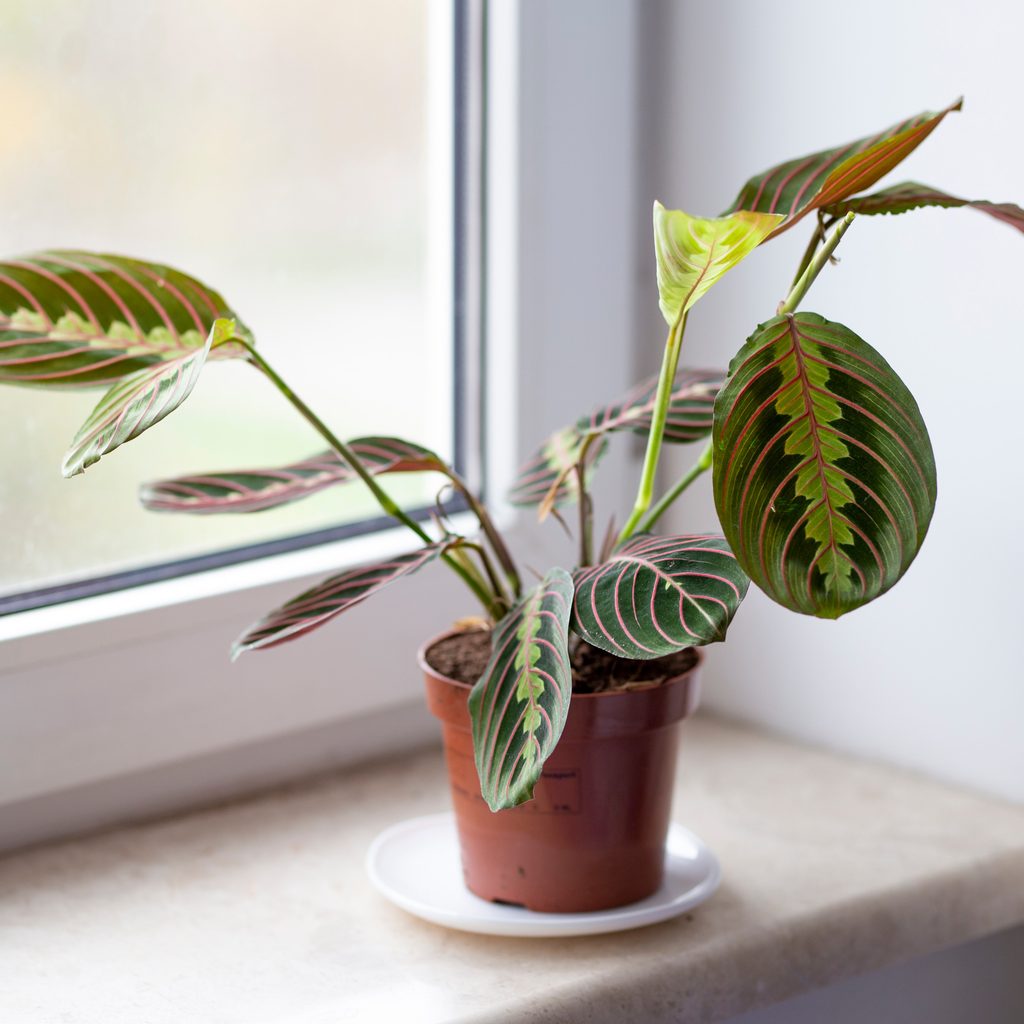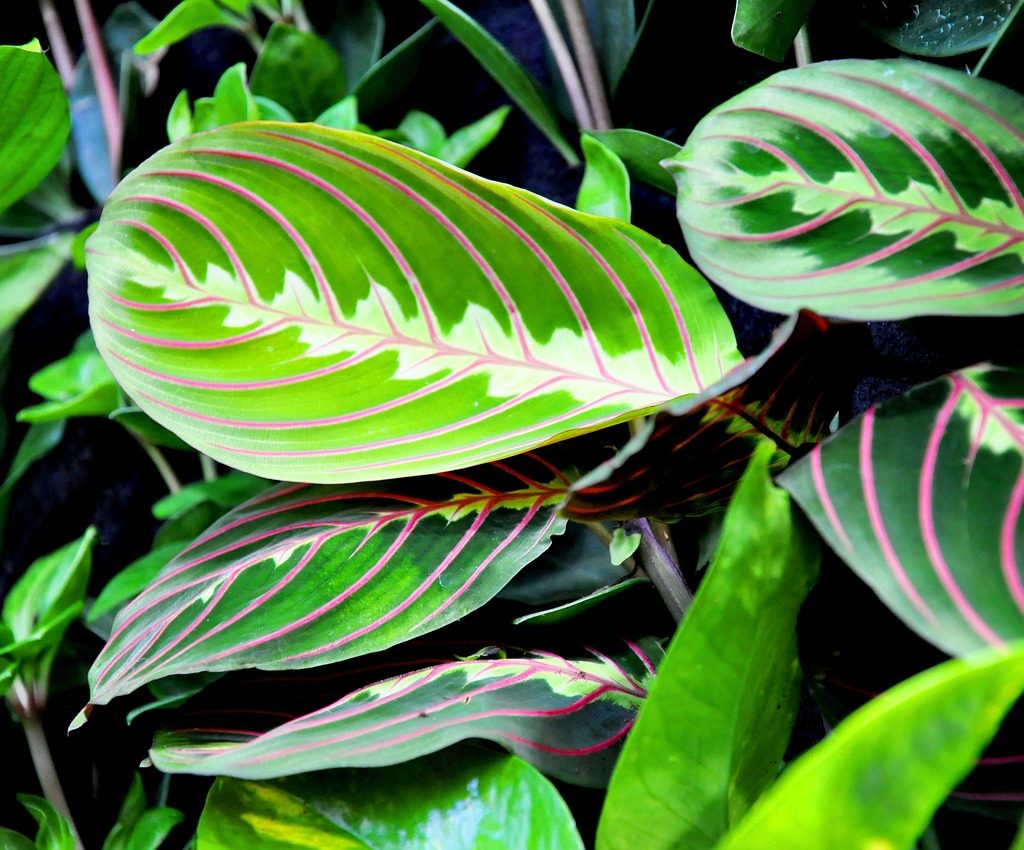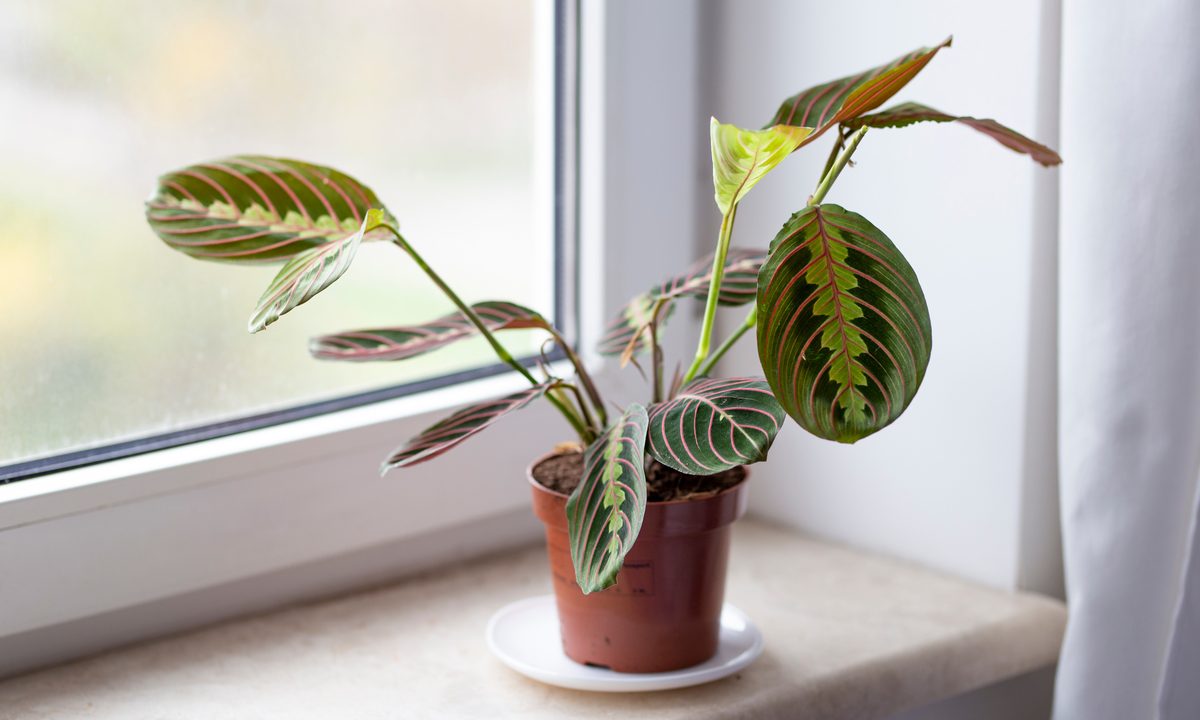Featuring intricately patterned foliage, prayer plants are stunning houseplants, but they do have a reputation for being a bit finicky. Still, you don’t need to be hanging by a prayer when growing these plants indoors. All it really wants at the end of the day is proper and consistent prayer plant care.

What are prayer plants?
"Prayer plant" can be a catch-all term for different types of plants that fold up their leaves at night like praying hands. Calathea, stromanthe, ctenanthe, and maranta are genera within the Marantaceae family that are often referred to as prayer plants.
They all feature plants that go through this specific leaf movement. There’s no clear consensus on why we see this folding movement in prayer plants at night. That said, the most common theory is that at night, prayer plants fold up their foliage to keep water from sitting on them during nighttime, which could make them more vulnerable to developing fungal diseases.
The most common species of plants referred to as “prayer plants” is Maranta leuconeura, which is native to Brazilian rainforests. Maranta leuconeura tends to be more forgiving than other plants in the Marantaceae family, especially when it comes to watering and humidity.
This plant is known for its oval leaves with either dark green rabbit-track markings running down them or raised herringbone veins in white, red, or pale yellow. Marantas grow low, generally reaching a height between 1 and 3 feet. As houseplants, they're around 8 inches tall. Every so often, they can put out small, pinkish-white blooms.

How do you care for prayer plants?
Maintaining a prayer plant can be a delicate art, and you might have lots of ups and downs along the way. Here are important steps for prayer plant care to help you grow a hassle-free maranta inside your home.
Step 1: Water your plant when the top inch of soil feels dry to the touch.
While prayer plants appreciate light, well-draining soil, they also love their growing medium consistently moist. Note: Tap water can give them burnt edges, so leave out your tap water for a day to allow the chlorine and fluoride to dissipate, or use distilled water.
Step 2: Give your plant ample humidity.
These plants simply do best in moist air, generally preferring 50% or higher humidity. You can leave your plant on top of a pebble tray with water or turn on a humidifier for a few hours a day. It helps to use a hygrometer to gauge your home's humidity.
Step 3: Provide your maranta with ample indirect light.
You’re better off giving your plant bright indirect light or medium light. Too much direct light can scorch its leaves. If you don't get much light at all in your home, consider investing in grow lights.
Step 4: Keep the temperature range for a maranta plant between 65 and 70 degrees Fahrenheit.
If you’re using air conditioners and heaters in your home, pay attention to the humidity levels to keep your maranta happy.
Step 5: Apply a balanced liquid fertilizer every two weeks throughout the growing season.
Avoid using plant food in the fall and winter. Over-fertilizing while your plant is dormant can make it vulnerable to leaf burn and diseases.

What are common prayer plant issues?
You might have a lot of troubleshooting to do if you’re a first-time prayer plant owner. Still, if you keep on top of signs of trouble, you’ll come out on the other side with a lush, productive plant. Keep an eye out for these prayer plant issues and address them as they come.
Step 1: Look for brown, crisp edges, which could indicate hard water, harsh light, and dry air.
Address each potential problem one by one to pinpoint the culprit. Use distilled water in place of tap water, pull your plant away from the window, and turn on a humidifier.
Step 2: Check if you have any curling leaves.
Curling foliage is typically an indicator of underwatering, so give your plant a deep drink of water if you notice leaves curling.
Step 3: Remove yellowing leaves and identify the cause behind them.
Yellow leaves may indicate overwatering, so cut back on watering if you see them. Yellowing leaves with white specks can also mean spider mite damage, which should be treated with a foliar solution and extra humidity.
Step 4: Look for any fading foliage.
While too much direct light can scorch a prayer plant and burn its leaf edges, too little light can lead to fading leaves and leggy stems. If you don’t get enough natural light, consider investing in grow lights.

When should you repot a prayer plant?
Sometimes, you might not be doing anything wrong. A struggling prayer plant may simply be one that wants a new home. After acclimating your new prayer plant to your home for a few weeks, it's a good idea to repot it in a planter that's at least 2 inches bigger than its original nursery pot. This is because many nursery plants are often very potbound, so the roots may not have adequate breathing room or enough space to take up water and nutrients.
If you've had your prayer plant for a while, it will often let you know when it needs to be repotted. You may notice roots growing out of your drainage holes, for example. Your leaves may also look wilted or curled if your plant is not adequately retrieving water through its roots. The good news is, you usually only need to repot your plant every two or so years.
Despite having an intimidating reputation, the prayer plant can be a fuss-free plant under the right conditions and care. The three main culprits of a struggling plant are underwatering the soil, using hard water, and failing to supply ample humidity. Still, an adjustment period for a new prayer plant doesn't mean your relationship with this notoriously picky plant is doomed. All it takes is a little attention, and you'll have a thriving plant before you know it.



